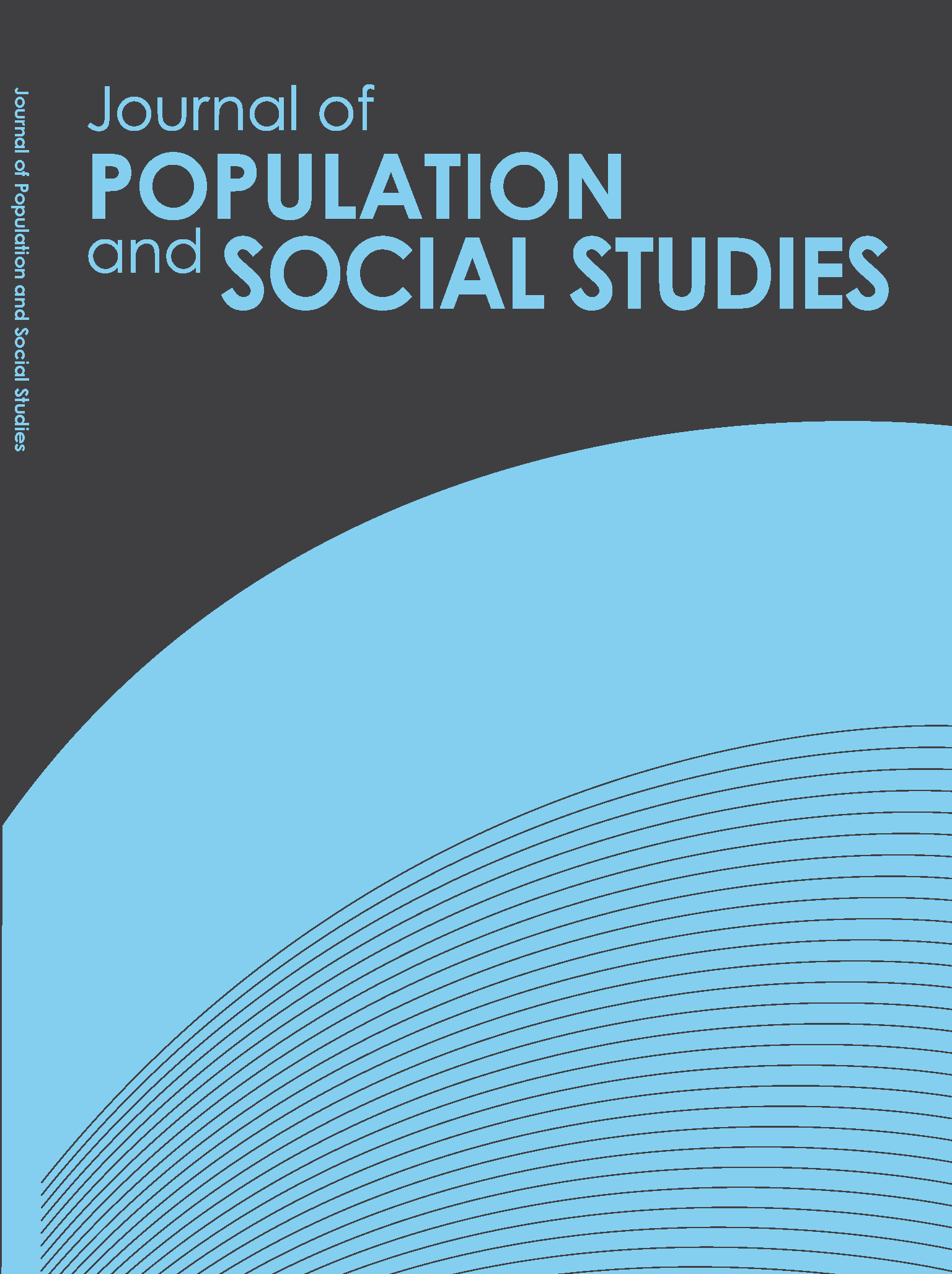Encouraging Entrepreneurship for People with Disabilities in Indonesia: The United Nations’ ‘Leave No One Behind’ Promise
Main Article Content
Abstract
The various stigmas surrounding People with Disabilities (PWDs) make it difficult for them to find employment. Therefore, entrepreneurship is a way for PWDs to carry out economic activities. This study aims to analyze the employment conditions, the importance of entrepreneurship, and the entrepreneurial conditions carried out by PWDs in Indonesia. The source of data for this study is the 2018 Indonesian National Socio-Economic Survey (SUSENAS). The analysis techniques for this study include cross-tabulation, Pearson’s chi-square, and Likelihood Ratio (LR) for statistical tests. The results show that PWDs face major obstacles with participating in employment, with Women with Disabilities (WWDs) facing even more significant obstacles than Men with Disabilities (MWDs). Most PWDs, both men and women, have equal chances of becoming entrepreneurs. The vital role of entrepreneurship is also shown by the nature of entrepreneurship, as an independent effort that unnecessarily depends much on other parties so that PWDs have extra opportunities. The majority of PWDs who become entrepreneurs, with low education levels, live in rural areas and work in the agricultural sector, indicating that their businesses are small scale. Small companies tend to be vulnerable to competition, so that at any time, PWDs have the risk of losing their businesses.
Article Details
References
• Advisory, Conciliation and Arbitration Service (Acas). (2017, July). Disability discrimination: key points for the workplace. https://archive.acas.org.uk/media/4504/Disability-discrimination-key-points-for-the-workplace/pdf/Disability_discrim_keypoints_workplace_Nov.pdf
• Anh, D. N., Duong, L. B., & Van, N. H. (2005, September). Youth employment in Viet Nam: Characteristics, determinants and policy responses. International Labour Office. http://www.oit.org/wcmsp5/groups/public/---ed_emp/---emp_elm/documents/publication/wcms_114146.pdf.
• Badan Pusat Statistik. (2019). Survei Sosial Ekonomi Nasional (SUSENAS) Kor 2018 [2018 Indonesian National Socio-Economic Survey] [Dataset]. https://sirusa.bps.go.id/sirusa/index.php/dasar/view?kd=1558&th=2018
• Balser, D. B. (2000). Perceptions of on-the-job discrimination and employees with disabilities. Employee Responsibilities and Rights Journal, 12, 179-197. https://doi.org/10.1023/A:1013051309461
• Borjas, G. J. (2013). Labor economics. 6th ed. Mc Graw Hill.
• Dhar, S., & Farzana, T. (2017). Entrepreneurs with disabilities in Bangladesh: An exploratory study on their entrepreneurial motivation and challenges. European Journal of Business and Management, 9(36), 103-114. https://www.iiste.org/Journals/index.php/EJBM/article/download/40355/41502
• Gberevbie, D. E., Osibanjo, A. O., Adeniji, A. A., & Oludayo, O. A. (2014). An empirical study of gender discrimination and employee performance among academic staff of government universities in Lagos State, Nigeria. International Journal of Social, Human Science and Engineering, 8(1), 101-108. https://publications.waset.org/9997145/pdf
• Goodley, D., Lawthom, R., & Runswick-Cole, K. (2014). Dis/ability and Austerity: beyond work and slow death. Disability and Society, 29(6), 980-984. https://doi.org/10.1080/09687599.2014.920125
• Green, A. E. (2011). Spatial inequality and skills in a changing economy. UK Commission for Employment and Skills. https://dera.ioe.ac.uk/10460/1/equality-spatial-inequality.pdf
• Hogan, A., Kyaw-Myint, S. M., Harris, D., & Denronden, H. (2012). Workforce participation barriers for people with disability. International Journal of Disability Management, 7, 1-9. https://doi.org/10.1017/idm.2012.1
• Jones, M. K. (2006). Is there employment discrimination against the disabled? Economics Letters, 92(1), 32-37. https://doi.org/10.1016/j.econlet.2006.01.008
• Kementerian Kesehatan RI. (2019). Disabilitas: Hari disabilitas internasional. https://www.kemkes.go.id/download.php?file=download/pusdatin/infodatin/infodatin-disabilitas.pdf
• Keynes, J. M. (1997). The general theory of employment interest and money. Prometheus Books.
• Kotler, P., & Keller, K. L. (2016). Marketing management. Pearson.
• Mladenov, T. (2016). Disability and social justice. Disability & Society, 31(9), 1226-1241. https://doi.org/10.1080/09687599.2016.1256273
• Neath, J., Roessler, R. T., McMahon, B. T., & Rumrill, P. D. (2007). Patterns in perceived employment discrimination for adults with multiple sclerosis. Work, 29(3), 255-274. https://pubmed.ncbi.nlm.nih.gov/17942997/
• Norafandi, M. N. A., & Diah, N. H. (2017). The Prospects of People with Disabilities (PWDs) participation in entrepreneurship: The perspective of university students with physical and sensory disabilities. International Journal for Studies on Children, Women, Elderly and Disabled, 2, 79 – 85. https://www.ijcwed.com/wp-content/uploads/2017/06/IJCWED2_75.pdf
• Owen, D., Hogarth, T., & Green, A. E. (2012). Skills, transport and economic development: Evidence from a rural area in England. Journal of Transport Geography, 21, 80-92. https://doi.org/10.1016/j.jtrangeo.2012.01.015
• Pagán, R. (2009). Self-employment among people with disabilities: evidence for Europe. Disability & Society, 24 (2), 217–229. https://doi.org/10.1080/09687590802652504
• Parker, J. (2010). Models of Unemployment [E-book]. In economic 314 coursework (pp. 14[1]-14[34]). Reed College. https://www.reed.edu/economics/parker/s11/314/book/Ch14.pdf
• Prasetya, A., & Mawardi, M. K. (2019). Opportunities and challenges of entrepreneurship approach for people with disability empowerment in a developing country. Proceedings of the Annual International Conference of Business and Public Administration (AICoBPA 2018), 62-66). https://dx.doi.org/10.2991/aicobpa-18.2019.14
• Samardick, R., Gabbard, S. M., & Lewis, M. A. (2000). Youth employment in agriculture. In Bureau of Labor Statistics (Ed.), Report on the Youth Labor Force (Revised ed., pp. 52–57). U.S. Department of Labor. https://files.eric.ed.gov/fulltext/ED449309.pdf
• Sefotho, M. M. (2015). Mainstreaming disability in education beyond 2015. South African Journal of Education, 35(1), 1-8. https://www.ajol.info/index.php/saje/article/view/113810/103526
• Shastri, A. (2014). Gender inequality and women discrimination. IOSR Journal of Humanities and Social Science, 19(11), 27-30. https://doi.org/10.9790/0837-191172730
• Snyder, L. A., Carmichael, J. S., Blackwell, L. V., Cleveland, J. N., & Thornton, G. C. (2010). Perceptions of discrimination and justice among employees with disabilities. Employee Responsibilities and Rights Journal, 22(1), 5–19. https://doi.org/10.1007/s10672-009-9107-5
• Tajfel, H. (Ed.). (1978). Differentiation between social groups: Studies in the social psychology of intergroup relations. Academic Press.
• Tiwari, M., Mathur, G., & Awasthi, S. (2018). Gender-based discrimination faced by females at workplace: A perceptual study of working females. Journal of Entrepreneurship Education, 21(3), 1-7. https://www.abacademies.org/articles/Gender-based-discrimination-faced-by-females-at-workplace-1528-2651-21-3-202.pdf
• United Nations Committee on the Rights of Persons with Disabilities (UNCRPD). (2006). Convention on the rights of persons with disabilities. https://www.ohchr.org/EN/HRBodies/CRPD/Pages/ConventionRightsPersonsWithDisabilities.aspx#6
• United Nations. (2015). Transforming our world: The 2030 agenda for sustainable development (A/RES/70/1). https://sustainabledevelopment.un.org/content/documents/21252030%20Agenda%20for%20Sustainable%20Development%20web.pdf
• United Nations. (2018). UN disability and development report – Realizing the SDGs by, for, and with persons with disabilities. https://social.un.org/publications/UN-Flagship-Report-Disability-Final.pdf.
• Yamamoto, S. H., & Alverson, C. Y. (2014). Factors of successful self-employment through vocational rehabilitation for individuals with disabilities. Journal of Career Assessment, 23(2), 318-335. https://doi.org/10.1177%2F1069072714535176
• World Health Organization. (2011). World report on disability. http://whqlibdoc.who.int/publications/2011/9789240685215_eng.pdf?ua=1


